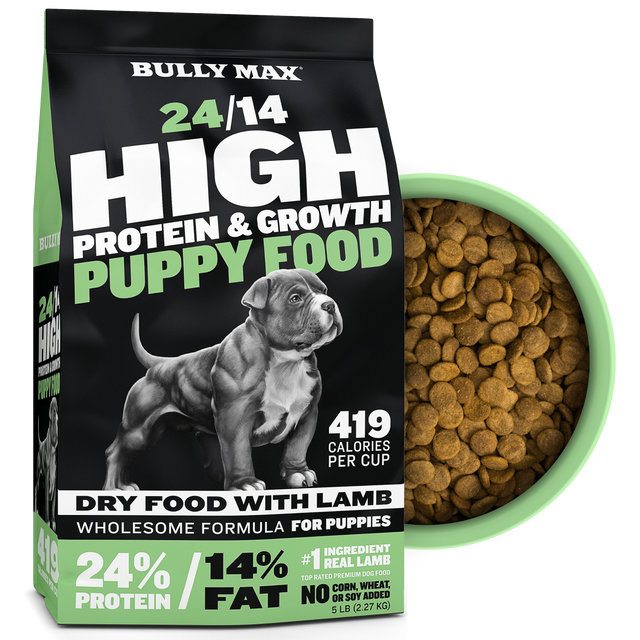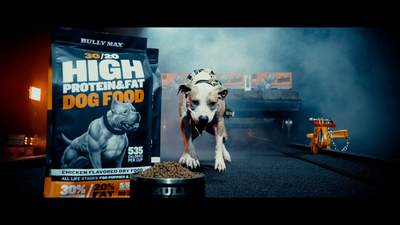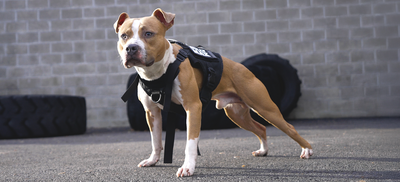Benadryl for Dogs: Uses, Dosage, and Other Tips
Giving Benadryl to your dog: should you do it?
Is it helpful and harmless?
Or is Benadryl for dogs dangerous and a bad idea?
Used properly, in the right situations, Benadryl can be a lifesaver—preventing headaches and alleviating discomfort for your dog.
Before we get started, a disclaimer: it’s always a good idea to talk to your vet about giving medication to your dog. If you can’t make it in for an appointment, try just giving your vet a call to ask their opinion if you’re worried about giving your dog Benadryl.
What Is Benadryl?
Benadryl is a common over-the-counter antihistamine that you can buy at any drug store, pharmacy, or grocery store.
Like other antihistamines, its primary use is to help reduce symptoms associated with allergies, such as sneezing and runny nose.
Keep in mind that Benadryl is the brand name for the active ingredient called diphenhydramine. So even if your store doesn’t sell Benadryl, they almost certainly offer a different brand with the same active ingredient. Check the “Drug Facts” on the back of the label and look for diphenhydramine as the Active Ingredient.
Benadryl for Dogs Uses
Benadryl can be helpful if your dog has any of these symptoms:
- Itchy skin
- Irritated skin
- Nausea
- Car sickness
- Sedatives
- Insomnia
- Anxiety
- Insect or flea bites
- Bee stings
- Reaction to vaccines
- Hay fever, sneezing, or coughing
- Stuffy or runny nose
- Asthma
- Allergies
Can I Give My Dog Benadryl? Is Benadryl Safe for Dogs?
Generally speaking, yes.
Benadryl is a relatively harmless drug that should be totally safe for your dog.
But there are a few caveats:
Benadryl might not be safe for puppies. If your dog is a little pup, ask your vet first. Just as you have to be careful giving medications to human babies, you have to be careful with what you give a puppy. They’re small and may not have fully developed
Avoid combination Cold/Sinus medications. Diphenhydramine is safe for dogs—but many of the other cold and sinus ingredients (including fever reducers, decongestants, and expectorants) may not be. Make sure diphenhydramine is the ONLY active ingredient listed on the label.
Steer clear of liquid Benadryl. In liquid form, Benadryl has a high alcohol content that will be unsafe for your pet.
It’s counter-indicated with some conditions. If your dog has prostatic disease, glaucoma, cardiovascular disease, or hyperthyroidism, definitely check with your vet to make sure Benadryl is safe for your pet.
Watch for formulas containing sodium. Some Benadryl formulas (such as children’s versions) contain sodium, which could be problematic for dogs with certain health conditions who are taking medications. To be on the safe side, look for a form of Benadryl that does not contain sodium.
Do not exceed the recommended dosage. More details on this below.
Benadryl for Dogs: Dosage by Weight
How much Benadryl can you give a dog?
The amount of Benadryl your dog needs depends on its size.
The easy (and less precise) way to determine this is to put your dog into one of three categories:
- 30 lbs and smaller – give 10 mg per dose
- 30-50 lbs – give 25 mg per dose
- 50 lbs and over – give 50 mg per dose
That should give you a fairly accurate dosage.
According to the Merck Veterinary Manual, the standard dose for Benadryl is 2-4 milligrams per kilogram of body weight or 0.9-1.8 milligrams (mg) of Benadryl per pound.
Therefore, a simple and practical dose is 1 mg of Benadryl per pound of your dog’s weight, given 2-3 times a day. For example, a 10-pound dog might receive a 10 mg dose in the morning, afternoon, and evening.
Most diphenhydramine (Benadryl) tablets are 25 mg, which would be the appropriate size for a 25-pound dog. Smaller dogs will require you to cut or divide these 25-mg pills. In this case, children’s Benadryl in the chewable tablets may be a good option. These come in dosages of 12.5 mg.
How Long does Benadryl Take to Work in Dogs?
Benadryl absorbs very quickly and usually begins to take effect after about 30 minutes.
Side Effects of Benadryl
Being a safe medication, Benadryl’s side effects are on the mild side.
The most commonly reported side effect is drowsiness. This is so common that many people give Benadryl to their dogs to help them calm down. (Diphenhydramine is even marketed and used as a sleep-aid by many people.)
The second most common side effect is mild disorientation. We recommend paying attention to your dog’s behavior after giving them Benadryl to make sure they don’t experience this before giving them a second dose.
Other, less common side effects include:
- Dry mouth
- Breathing problems
- Diarrhea
- Lack of appetite
- Vomiting
- Agitation
- Rapid heartbeat
- Urinary retention (not peeing)
If you think your dog is experiencing any of these side effects, give your vet a call.
Tips for Giving Benadryl to Your Dog
Test it first. Instead of giving your dog a full dose right off the bat, try giving them a small amount of Benadryl and waiting for a few hours. Watch your dog for any signs of side effects or reactions.
Always give it with food. One way to avoid some of Benadryl’s side effects (such as nausea and lack of appetite) is to give it to your dog with a meal or a dog treat. Bully Max High-Performance, high calorie dog food is good for this.
Break up tablets and put it into a piece of meat. Most dogs are less than eager to swallow a whole pill. But if you break the pill up into chunks and place them inside a piece of meat, your dog will wolf it down without ever knowing there was a pill inside.
Mix liquid gel Benadryl with wet food. If you have a liquid gelcap, try breaking it open and mixing it with some wet food containing gravy. Your dog will never taste the Benadryl (and they’ll love the gravy).









123 comments
our dog had constant itching and skin allergies, it turned out to Purina Moist and Meaty, he had eaten it for years, switched his food and within a month no more scratching, look at what you are feeding.
my old dog wanders the house every 5-10 minutes constantly pacing, when finally lays down whines & howls and looks like he’s lost have done everything from food to you name it, I think this might calm him down evough, he is walked at least 3 times a day, on a 3 acre lot so I don’t think lack of exercise is the problem, so will try this Thank you
Interesting our vet also prescribed Pepcid with Benadryl for an unknown hack related to
Maybe acid reflux. Did you ever learn anything else about this combo?
pardon my rudeness, but I have spent a considerable time in talking to PhDs in a number of field and if I had to listen to you tell me what you have written above, I would say you had enough mouth for 14 rows of teeth
John Donald
My sister fought cancer for 10years before passing away 14mths ago
She researched and researched because her life literally depended on it and everything you have just written above is what she too found to be true!
At first we thought she had lost her mind, but she said the same as you
Research
Research
Research
There is proof for everything you (and she) are saying
It’s a frightening world where human beings place $$ before lives but this is true ESPECIALLY where the pharmaceutical companies are concerned!
I’ve gone back to raw feeding for my dogs and cats and am trying to do the same with the more reluctant human members of my family and I cook everything myself FRESH
We have a filter to remove fluoride and other poisons from our water but getting family to understand the perils of radiation is a far steeper hurdle
Thank you for sharing your knowledge
I for one have no doubt the OVER vaccination and vaccinating before the immune system can cope is a huge concern
I will always titre test from here on before vaccinating (even though it’s a cost of $200 per dog here in Australia compared with the $25 in the US)
I’ll look forward to hearing more from you in the future.
Vicki